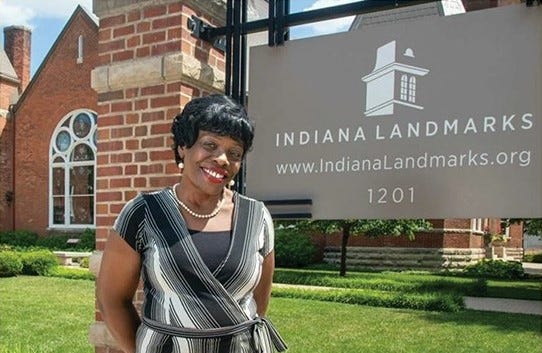Preserving Black heritage in Kokomo
Trotter shares story of her ancestor, who helped end indentured servitude in Indiana
This article is brought to you by City of Firsts Cremation and Funeral Services by Rose and Geiger. Proudly serving the residents of Kokomo and surrounding counties, they offer simple cremations and traditional funerals at affordable prices. Visit www.cityoffirstscremations.com to learn more!
Eunice Trotter knew that her ancestor was historically significant. She is descended from Mary Bateman Clark, a woman whose life was instrumental in ending indentured servitude in Indiana.
But who will remember her?
Last week, the Carver Community Center hosted a Black Heritage Preservation event, presented by Indiana Landmarks and the Kokomo Howard County Public Library, and led by Indiana Landmarks director, Trotter. She authored the book, “Black in Indiana,” a fictional story using factual information regarding her ancestor, Clark. The story tells of how Clark’s case helped end a portion of the nation’s greatest shame.
Trotter, in leading this workshop, discussed her role in the preservation of Black History. She provided information to community members to help them preserve the history of their own families, and why it is so important to preserve information about our kinship. It is especially important when they pass away, she explained, as obituaries are a way to obtain a sum of information about our family history at once.
Reverend Dr. William Smith, pastor of Second Missionary Baptist Church, attended the event and was blown away by the plethora of knowledge he received.
“It was very impactful,” said Dr Smith. “We must personally treasure history in preserving our obituaries.”
Obituaries bring to the forefront a steadily worsening issue, which is the rising cost of publishing obituaries in print media. That cost influences the information of our ancestors being shared; a barrier to history. If people cannot afford to pay the cost to publish an obituary, it is hard to research information about family history.
A portion of the event was devoted to telling the story of the creation of the state of Indiana itself, and how in the beginning it was a part of the Northwest Territory. Janet Barnett, a community member who attended this workshop for the second year in a row, stated, “I thought it was amazing how in spite of slavery and indentured servitude, slaves were very bright.” They found ways to keep their stories alive so that people centuries from now can know who they are and where they came from.
It matters who is telling the story. We must be the ones to tell our own. It takes help from others who have the resources, but the word must be formed by our very own mouths.
Dr. Smith commended Indiana Landmarks for its work in preserving Black History all over the state of Indiana with its new program, funded by the African American Fund, as well as the Lilly Endowment.
“Our community has received support from Indiana Landmarks for the Douglass School project, and we are proud of the fact that we are doing our part in preserving Black history,” said Dr. Smith.
Trotter explained there is so much more work to be done in the effort to preserve Black history, which also involves preserving Black cemeteries. This will involve creating ways for people to visit and observe various locations with a driving tour individuals can witness through their mobile devices.
No matter how difficult or tedious the process may be, it is imperative the history of our families be kept alive. It starts with us.
(Editor’s note: The Kokomo Lantern publishes obituaries at no cost to the family. Those wanting to preserve the memories of their loved ones without a financial burden being assessed for the privilege are encouraged to email obituaries to kokomolantern@gmail.com.)






